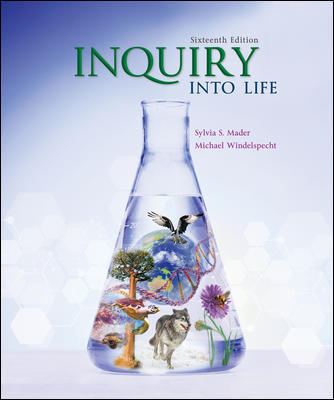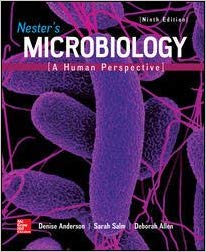Description
Test Bank for Inquiry Into Life 16Th Edition By Sylvia Mader
Inquiry Into Life, 16e, Mader
Chapter 1 The Study of Life
1) Organs are composed of tissues, which are composed of cells. This is an example of which characteristic of life?
A) Living things grow and develop.
B) Living things respond to stimuli.
C) Living things maintain themselves by homeostasis.
D) Living things have levels of hierarchical organization.
E) Living things are adapted to the environment.
2) The smallest structural and functional unit in a multicellular organism is a(n)
A) cell.
B) tissue.
C) organ.
D) organ system.
E) organism.
3) Which level of biological organization is composed of several tissues?
A) organism
B) organ system
C) organ
D) cell
E) molecules
4) Which sequence correctly lists the different levels of biological organization, from the smallest and simplest to the largest and most complex?
A) cells-organs-tissues-organ systems-organism
B) cells-tissues-organ systems-organs-organism
C) tissues-cells-organs-organ systems-organism
D) tissues-organs-organ systems-organism-cells
E) cells-tissues-organs-organ systems-organism
5) Organs are composed of tissues, which are composed of cells. This is an example of which characteristic of life?
A) Living things grow and develop.
B) Living things respond to stimuli.
C) Living things maintain themselves by homeostasis.
D) Living things have levels of hierarchical organization.
E) Living things are adapted to the environment.
6) Which sequence of classification categories is in the proper order from least to most inclusive?
A) genus, class, kingdom, domain, order, phylum, species, family
B) domain, class, genus, family, species, order, phylum, kingdom
C) species, genus, family, order, class, phylum, kingdom, domain
D) genus, species, order, class, family, kingdom, domain, phylum
E) species, genus, family, class, order, phylum, kingdom, domain
7) What is the correct format for the binomial name of a manatee?
A) Trichechus Manatus
B) trichechus manatus
C) TRICHECHUS manatus
D) Trichechus manatus
E) trichechus Manatus
8) Corn belongs to the kingdom
A) Plantae.
B) Animalia.
C) Fungi.
D) Protista.
E) Archaea.
9) The three major domains of life are
A) plantae, animalia, and archaea.
B) bacteria, fungi, and eukaryotes.
C) eukarya, prokarya, and animalia.
D) archaea, bacteria, and eukarya.
E) eukarya, prokarya, and fungi.
10) A multicellular, photosynthetic organism with complex, specialized cells and tissues would most likely be assigned to
A) kingdom Animalia.
B) kingdom Fungi.
C) domain Archaea.
D) kingdom Protista.
E) kingdom Plantae.
11) Regions of the earth inhabited by living organisms are known collectively as
A) the biosphere.
B) an ecosystem.
C) a population.
D) an organism.
E) a community.
12) All of the populations of various species living within a given area constitute a(n)
A) biosphere.
B) ecosystem.
C) population.
D) domain.
E) community.
13) A community of organisms along with the surrounding physical environment constitutes a(n)
A) biosphere.
B) ecosystem.
C) population.
D) habitat.
E) community.
14) The most important factor that determines where major ecosystems are located on the globe is
A) soil type.
B) available vegetation.
C) climate.
D) oxygen levels.
E) political boundaries.
15) The term “biodiversity” refers to
A) a study of the physical, non-living components of an ecosystem.
B) the similarities between species.
C) the rate of extinction of species due to human activities.
D) the total number of species, variation of species, and the ecosystems in which they live.





Be the first to review “Test BankFor Inquiry Into Life 16Th Edition By Sylvia Mader”